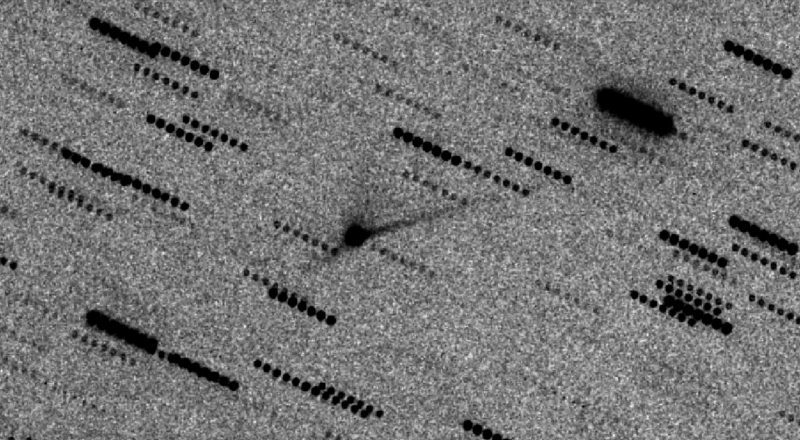
‘After’ photos of DART’s collision
DART – the Double Asteroid Redirect Test – was a huge hit, quite literally. The spacecraft smashed into an asteroid moon – called Didymos B, or Dimorphos – on September 26, 2022. The goal was to prove that we can send a spacecraft to push an asteroid slightly in its orbit. It was practice for a possible future scenario, in which we find a hazardous asteroid barreling toward Earth. Did it work? We don’t know yet. It’s going to take a while longer for scientists’ calculations to show on whether Dimorphos was, in fact, moved off its path. But, while we wait, we’re seeing many interesting images of the collision itself, which we want to share with you here.
The collision created tails of debris
We had no idea (and the scientists didn’t know either) that the DART asteroid collision would be so visible from Earth.
But the fact is that debris trail from the collision with Dimorphos stretched for some 6,200 miles (10,000 km) into space. By contrast, Earth’s diameter is just a bit larger, at about 8,000 miles (13,000 km). And keep in mind that little Dimorphos itself is – or at least was – just 560 feet (170 meters) in diameter prior to the impact. How big is it now? We don’t know. Many amateur astronomers – including EarthSky friends Filipp Romanov of Russia and Eliot Herman of the U.S. state of Arizona – captured the impact site in the days after the collision. And, of course, both the Webb and Hubble space telescopes viewed it, along with NOIRLab’s SOAR Telescope in Chile. The images were all amazing!
NOIRLab said in a press release on October 3, 2022:
These observations will allow scientists to gain knowledge about the nature of the surface of Dimorphos, how much material was ejected by the collision, how fast it was ejected, and the distribution of particle sizes in the expanding dust cloud — for example, whether the impact caused the moonlet to throw off big chunks of material or mostly fine dust.
So, stay tuned! There will likely be more exciting DART science and images to come!
After photos of Dimorphos

Nailed it! The SOAR Telescope in Chile, operated by @NOIRLabastro, captured the more than 10,000 kilometers of trail left behind after @NASA's DART spacecraft hit Dimorphos.
Credit: CTIO/NOIRLab/SOAR/NSF/AURA/T. Kareta (Lowell Observatory), M. Knight (US Naval Academy) pic.twitter.com/F9FUsELA55— NOIRLab (@NOIRLabAstro) October 3, 2022
Teamwork makes the dream work ?? For the first time, @ESA_Webb and @HUBBLE_space have observed the same target at the same time.
And it's not just any target… it's the aftermath of the #DARTMission collision with #asteroid Dimorphos! ???
More info ? https://t.co/bbENdwU98r pic.twitter.com/33E6EWnMb4— ESA Science (@esascience) September 29, 2022
Bottom line: See amazing ‘after’ photos of DART’s collision with a tiny stony asteroid on September 26, 2022. Images show comet-like debris tails almost as long as Earth!











